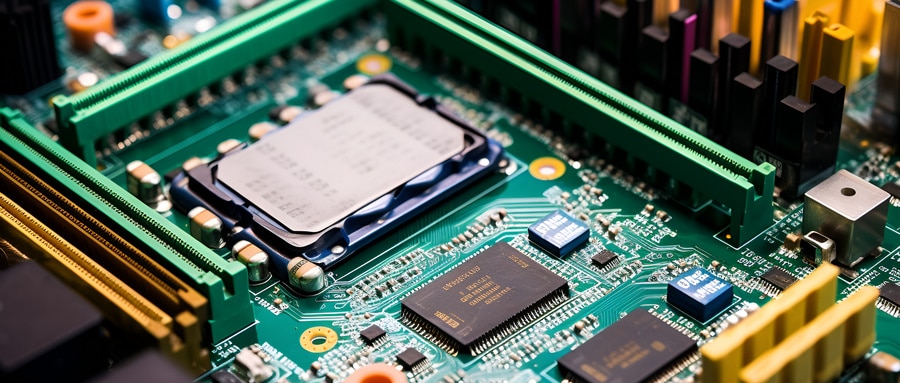Navigating the Labyrinth of PCB Material Types: A Comprehensive Guide for 2024
PCBs (Printed Circuit Boards) are an integral component of electronic devices, as their material composition significantly affects their performance, durability and application scope. This article serves as an overview of various PCB materials with their specific characteristics and potential uses.
Understanding PCB Material Types
Materials chosen for PCB boards depend heavily on their intended application, with consideration given to factors like electrical, mechanical and thermal properties being key factors in making this crucial choice. Below are some of the main PCB material types:
- FR-4 (Flame Retardant 4): Widely known in industry circles for its outstanding electrical insulation properties and durability, FR-4 material is widely employed due to its wide-spread use across home appliances, computers, and communication equipment. FR-4 material comes from laminated fiberglass cloth material with epoxy resin coating on its backside – something other materials cannot do.
- Aluminum: Aluminum-backed PCBs are widely utilized for high power and temperature applications, such as LED lights, power supplies and automotive systems. These boards feature excellent heat dissipation properties which make them essential components.
- Polyimide: Renowned for its outstanding thermal stability, mechanical toughness, and chemical resistance properties, polyimide is commonly utilized in applications that expose PCBs to harsh environments – aerospace, automotive and medical industries being among its primary use-cases.
- Rogers material: If your application requires low dielectric loss, Rogers material could be an ideal option. With superior RF performance it is widely used in antennas, amplifiers and radar applications.
- PTFE (Teflon): Renowned for its low dielectric constant and excellent high-frequency performance, PTFE is widely utilized for microwave, radio frequency, and high speed design applications.
- Flex: As its name implies, flexible PCBs made from flex materials are lightweight and bendable – perfect for tight packaging needs such as consumer electronics, medical equipment and telecom.
Choosing the Appropriate PCB Material Types
To choose an optimal PCB material types, it is important to consider factors like its electrical properties (dielectric constant and loss tangent), mechanical strength, thermal durability and moisture sensitivity as well as cost-effectiveness against your budget constraints.
In summary, understanding the characteristics and performance parameters of different PCB materialstypes is integral to creating efficient, cost-effective electronic products. With this knowledge at hand, it becomes possible to select materials for specific application requirements that will ensure optimal performance and provide cost savings in turn.

PCBs offer something suitable for almost every need and with rapid advancements in electronics and technology, this choice will only increase as we progress into 2024. It promises to be an exciting space!
Strengthen your electronic projects with PCB materials from PEAK!
FAQ:
- Q: What are the different PCB material types?
A: The most commonly used materials for PCBs include FR4, Aluminum, Polyimide, PTFE, Rogers, and CEM materials. - Q: What is FR4 and why is it commonly used?
A: FR4 is a glass-reinforced epoxy laminate material. It’s popular due to its relatively low cost, good thermal characteristics, and high mechanical and electrical properties. - Q: What is the purpose of using Aluminum PCBs?
A: Aluminum PCBs are mainly used for their effective thermal dissipation. They are particularly useful for LED applications and power convertors. - Q: What is Polyimide PCB material?
A: Polyimide is a high-temperature, flexible material that is resistant to many chemicals. It is commonly used for flexible PCBs in applications like aerospace and medical industries. - Q: Why would someone use PTFE PCB material types?
A: PTFE (Polytetrafluoroethylene) or Teflon material is chosen for its low electrical loss, making it perfect for high-frequency applications such as RF and microwave circuits. - Q: What makes Rogers material types unique?
A: Rogers material exhibits lower loss than other materials, making it an excellent choice for high-frequency and high-speed digital applications. It’s also used for its consistent performance across a range of frequencies. - Q: What is CEM material types?
A: CEM (Composite Epoxy Material) is a group of composite materials made from woven glass fabric surfaces. CEM materials, such as CEM-1 and CEM-3, are cheaper than FR4 and used widely in less demanding applications. - Q: How is the PCB material types chosen?
A: The choice of PCB material depends on various factors such as the application of the PCB, cost considerations, electrical and thermal performance requirements, and mechanical strength needed. - Q: Can multiple materials be used in a single PCB?
A: Yes, depending on the requirements of the design, multiple materials can be used in a single PCB. - Q: Do all PCB manufacturers support all types of materials?
A: Not all PCB manufacturers may support all types of materials. It’s best to check with the manufacturer about their capabilities and the materials they work with.























